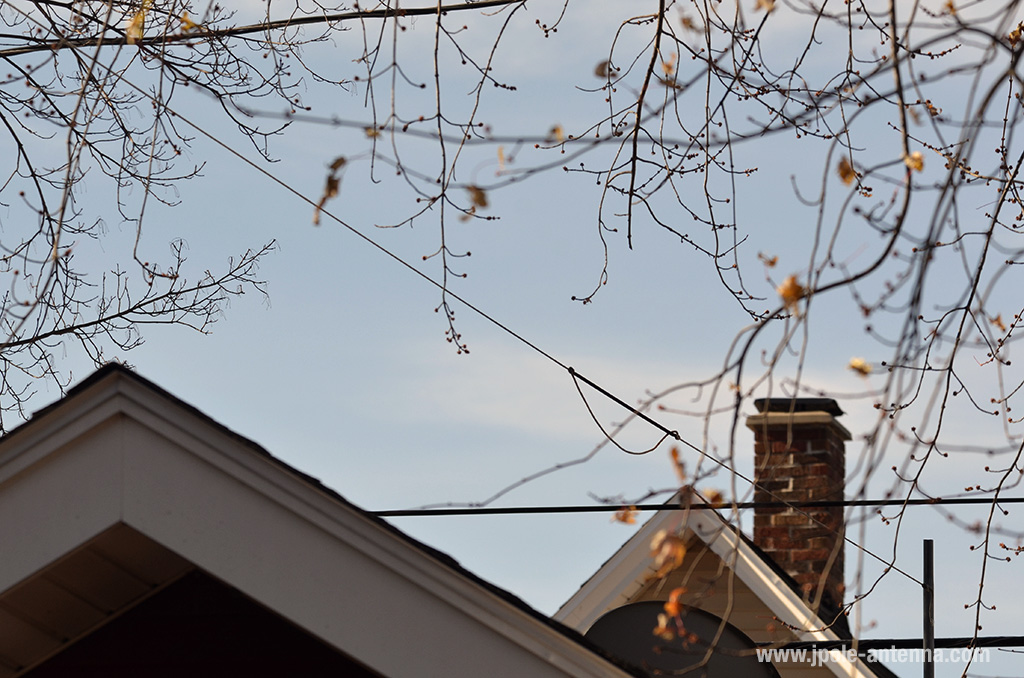I’m not sure if you can call me a fair weather ham radio operator, but my operating style quite often changes with the seasons. The spring and summer months you’ll find me outdoors participating in the many public service activities our local club is active in. But as the season turns cooler, I tend to move my operation indoors and will spend more time on the HF bands. Since I’ll go months without getting on HF, seasonal antenna maintenance is very important, espcially as the weather turns cold. Especially considering that my wire antennas inhabit a small city lot along with my three big maple trees.
Early last spring I posted an article on Spring Antenna Maintenance, and the items in that checklist can very easily be performed as part of winter antenna maintenance. In fact [pq] You should be out twice a year inspecting your antennas, systems, and feedlines to make sure everything is up to spec. [/pq] This handy checklist give you the items to watch for as you plan for winter ham radio operation.
Check and prune branches
 During the winter trees move their growth underground, putting down roots. But over the summer they are stretching their limbs and an growing new branches. This means they can also be contacting and interfering with your wire antennas. Trees make great antenna supports, but like any growing item, they can cause trouble. Prune out any branches that touch or interfere with your antenna, so that you have a clear path from end to end. Also watch for and inspect bigger limbs that could potentially fall on your antenna to make sure they’re healthy.
During the winter trees move their growth underground, putting down roots. But over the summer they are stretching their limbs and an growing new branches. This means they can also be contacting and interfering with your wire antennas. Trees make great antenna supports, but like any growing item, they can cause trouble. Prune out any branches that touch or interfere with your antenna, so that you have a clear path from end to end. Also watch for and inspect bigger limbs that could potentially fall on your antenna to make sure they’re healthy.
Inspect support wires and guylines
As I said, trees are growing in the summer, so if you are using a tree as a support structure, make sure that the tree’s growth isn’t stretching out your antenna wire and support line. I use a door spring on the end of my antenna as a combination shock absorber and tensioner (see the above image). This allows for tree growth and branches hitting the wire without taking the whole system down.
Are the support lines you use UV resistant? Sunlight and friction against the trees can cause rope to weaken and fray. After a few years of this abuse, all it takes is a storm with a few good gusts to take the whole line down. Check your support ropes and make sure they are still up to spec.
Tighten loose bolts and connections
Check your tower bolts and antenna mounts. Wind load vibrations can loosen bolts and connections. The last thing you want to do in the middle of January is to climb a tower to replace a broken mount.
Freezing and Thawing can wreck havoc on connections
 Are your antenna connections taped and well sealed? The freezing / thawing / freezing cycle in the winter drive moisture into poorly sealed connections, causing high SWR and premature failure of your feedine. My favorite sealant is Scotch Super 88 electrical tape. This high quality vinyl tape doesn’t get brittle in low temperatures and is a lot easier to work with than some of those ‘goopy’ feedline sealants.
Are your antenna connections taped and well sealed? The freezing / thawing / freezing cycle in the winter drive moisture into poorly sealed connections, causing high SWR and premature failure of your feedine. My favorite sealant is Scotch Super 88 electrical tape. This high quality vinyl tape doesn’t get brittle in low temperatures and is a lot easier to work with than some of those ‘goopy’ feedline sealants.
November is a great time to do your inspections, leaves are falling off the trees and you still get a few warm days before things turn really cold. Of course you guys in southern climates have it much easier with your moderate temps, but still take the time to do a biannual antenna inspection. Is there anything I missed? Leave me a comment below.
Do you think your 2M J-pole antenna will work OK in my attic? Simplex mostly.
Thanks, 73 de
W3BRF
The 2 meter J-Pole will work just fine in your attic. I’ve had several users put their antenna in the attic with great results. As long as you don’t have a metal roof, you should be fine.
Michael